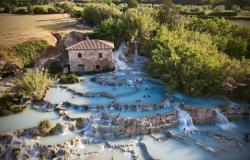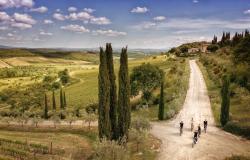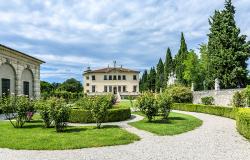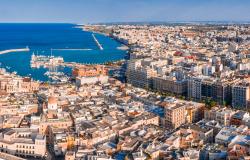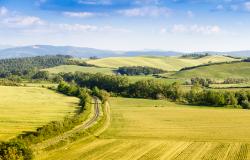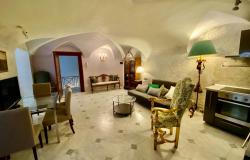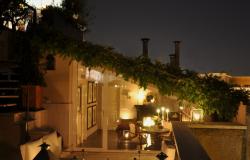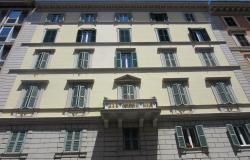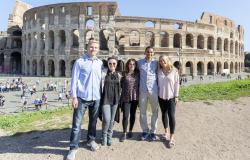Rome wasn’t built in a day. One day – or even one week – is not enough to visit the magnificent capital city of Italy and discover its many souls: from the impressive remains of the Roman Empire such as the Colosseum or the sumptuous Renaissance monuments celebrating the splendor of the Papal Rome, reaching their climax with the majestic Basilica of St. Peter in the Vatican. And what about the contemporary architectonic masterpieces such as the functional Auditorium Parco della Musica – a public music complex made of three beetle-shaped concert halls and an outdoor theater hosted in a park, designed by Italian architect Renzo Piano.
Yet, beside the city’s history, its highlights are made of many shadows to be discovered in the dark alleys of the historic centre or in the fascinating suburbs now trying to claim their own interpretation of beauty and art. And then, there are the many legends and rituals (and flavours, too) of a city where every stone can tell a story. Be it in the open or well concealed secrets just waiting to be unearthed, it’s well worth tracing them while visiting Rome.
Overall, you can never truly stop discovering the city as there will always be more to see and experience. This is when Rome car rentals might be handy. Besides seeing the city on four wheels is quite the experience in itself.
1. Drink water at the Lovers’ fountain near Fontana di Trevi
We bet you all know about the wonderful Baroque Trevi Fountain where Anita Ekberg plunged in in a famous scene from La Dolce Vita movie, and about the ritual coin throwing (be sure to make things right, using the right hand over the right shoulder). Yet, when paying a visit to this compelling monument, don’t forget to look at the smaller and plainer fountain at the right end of the Trevi fountain. According to legend, Roman girls observed a ritual when their furture husbands were about to leave as soldiers. In order to ensure they would come back to them: they came together to this fountain with two brand new glasses and after drinking water, they smashed the glasses. Apparently, this act will grant their love to last forever.
2. Embrace your romantic side in the Orange Grove
Indulge on a touching view over Rome skyline along the right bank of Tiber river from the beautiful garden (actually named Savello park) in the the quiet and elegant residential area on top of the Aventino hill. It was designed in 1932 by Raffaele De Vico in order to offer a quiet spot and a perfect viewpoint. Especially at sunset, on a sunny day and with the loved one by your side.

3. Observe St. Peter’s dome through the keyhole…
Just a few steps from the Orange Grove, you’ll probably notice a small yet ever present queue in the square where the gate of the Priorate of the Knights of Malta faces over. There’s a good reason, indeed: peeking through the keyhole, you’ll be able to grab an unespected view of the imposing dome, just as it was captured by a camera lens.
Did you enjoy this article? Don't miss "The Seven Hills of Rome."
4. …Or with a magic prospective from via Piccolomini
Is it made on purpose or just an optical illusion consequence of the urban design? We don’t know, yet looking at St. Peter’s dome from via Niccolò Piccolomini – a long and perfectly straight and flat road on the Gianicolo hill, ending with a panoramic viewpoint overlooking the Vatican – really looks like magic. Walking or driving along the road towards the dome, you will experience the weird sensation of seeing it to drift away. If you move backwards, instead, it will seem to get closer.
5. Test your sincerity at The Mouth of Truth
Patiently wait for your turn and stick your hand into the mouth of the huge round marble mask exposed against the wall of the portico of the Santa Maria di Cosmedin church, along the Tiber’s bank where the ancient Forum Boarium (cattle market) stood. Probably representing the sea god Oceanus and of uncertain origin, it was apparently used since the Middle Age as a “lie detector” to test one’s partner fidelity – as Audrey Hepburn and Gregory Peck’s characters do in the movie Roman Holiday – yet it took it’s current name only in 1485.
6. Have breakfast – or a late-night snack – with a rich Maritozzo
A (not too) sweet baked oval bun made of flour, eggs, butter, honey and salt, maritozzo is a staple of Roman pastries. The odd name probably comes from marito, husband in Italian, and refers to an old local habit: young men used to offer this sweet roll – eventually filled with a ring – to their fiancées as an engagement vow. Today, you can easily buy one on your own in almost every local pastry-shop (we suggest Roscioli Caffè or Regoli) and swap the bling with a luxurious filling of whipped cream, as many Romans like it. Perfect as a rich breakfast treat, maritozzo also is a favorite option for impromptu night hunger pangs, stopping by at some all-night open bars such as Il Maritozzaro in via Rolli (only on Fridays and Saturdays).

7. Explore Rome's buzzing street art scene
In Rome, art is not only displayed in museums and galleries. Strolling around the city neighborhoods – especially in suburbs – one can stumble upon real wall masterpieces made by some of Italy’ most brilliant street artists such as Alice Pasquini, Solo, Blu and Diavù. Wall paintings, often with a distinctive social character, are spreading almost everywhere in Rome but let us suggest some hotspot not to miss: the MU.Ro, Rome Museum of Urban Art, a site-specific project launched in 2010 by David Diavù Vecchiato in the Quadraro area; the Trullo working class borough where the collective named Pittori Anonimi del Trullo (Anonymous Trullo’s painters) bring color and beauty to the dull urban scenery; and the Ostiense District, displaying many interesting works along the streets between Piramide and San Paolo.

8. Enjoy an authentic carbonara
Eggs yolks (some also add one or two egg whites), guanciale (which is neither bacon nor pancetta), black pepper and a generous amount of Pecorino cheese. These are the only ingredients admitted for a real Carbonara, the famous Roman sauce embracing long (i.e. spaghetti) or short (i.e. rigatoni) pasta according to preference. Any other variation and additional ingredient, such as cream or onion, is simply considered as an outrage even though many touristic restaurants are ready to meet the “market demand”. To be sure to taste the authentic recipe, head to some proven venues such as Roscioli, Cesare al Casaletto or Armando al Pantheon.

9. Admire Caravaggio’s paintings in the San Luigi dei Francesi church
Not far from the iconic piazza Navona, the beautiful church, dating back to the XVI century, is dedicated to the Virgin Mary, St. Denis the Areopagite and St. Louis IX, king of France; the name St. Louis of the French actually refers to the fact that this is the national church of France in Rome. The Contarelli Chapel contains three masterpieces by the great Italian painter Michelangelo Merisi, known as Caravaggio: The Calling of St Matthew, The Inspiration of Saint Matthew and The Martyrdom of Saint Matthew.

10. Smell the roses’ scent at the Roseto Comunale
Set on the slopes of the Aventino hill, not far from Circo Massimo, in an area which has been devoted to flowers since the Roman age, the Roseto (public rose garden) showcases about 1.100 different botanical varieties of roses from all over the world, including “modern”, “ancient” and “primordial” wild roses. The rose garden is open to public from 21 April to 17 June 2018. Entrance is free, and it is possible to book guided tours. Every year in May, it also hosts the International Trials for New Varieties.

11. Snack on pizza al taglio (by the slice)
The Roman equivalent to NY slice – or should we put it the opposite way? – is pizza al taglio (pizza by the cut). A real icon of local street food, the pizza or focaccia baked in rectangular trails and then cut and sold by weight is ever present in Rome, usually sold in dedicated small shops with no seating facilities and a very limited additional offer such as fried bites – such as the delicious supplì, rice balls - or stuffed calzoni. Pizza can be just plain “white” (eventually cut into halves and filled with mortadella or ham), red (with tomato sauce and extra virgin olive oil) or can be topped with a limitless array of ingredients according to season and inventiveness. The best address in town? Definitely Gabriele Bonci’s Pizzarium.
12. Pay a visit to Pasquino, Rome’s most famous talking statue
Set in the eponymous square not far from Campo de’ Fiori, this Hellenistic-style statue dating to the third century BC is considered the first of the talking statues of Rome. Don’t expect of hearing any word, of course. The definition is due to the long-established tradition of attaching anonymous writings, poems and lampoons in Roman dialect (called pasquinate or pasquinades) to its base, to criticize the government or the Church.
 [Pasquino, photo via Wikimedia Commons]
[Pasquino, photo via Wikimedia Commons]
13. Retrace Rome’s history through Kentridge’s mural
Walking along the lower bank of river Tiber, from Ponte Sisto to Ponte Mazzini, it’s possible to admire in its entirety William Kentridge's Triumphs and Laments: a massive, vanishing mural on the river's walls displaying a non-chronological history in 90 figures representing Rome’s greatest victories and defeats from mythological time to present. Conceived as an ephemeral work of art, the 500 meter-long frieze was made by the artist erasing shapes and lines from the natural patina on the travertine embankment walls of Rome’s waterfront.
14. Discover the Centrale Montemartini Museum
In the Ostiense area, this unique museum is located in a former thermoelectric station whose origins date back to the beginning of 1900, when the Municipal Electric Company (today ACEA, which was responsible for the adaption of the building into a museum) was created. Today, the museum displays a number of ancient statues, sculptures and mosaics recovered during the city's underground excavations. It also hosts temporary exhibitions dedicated to specific aspects of contemporary urban life.
15. Shop and taste at Mercato Testaccio
The renovated neighborhood market, close to the old slaughterhouse where Rome’s quinto quarto (offal) culinary tradition was born, is well worth a visit for more than one reason. Once a working-class place, is now a trendy destination for grocery shopping as well as to eat in, with a choice of gourmet or down-to-earth food stalls. Don’t miss Romeo Chef & Baker or Casa Manco’s pizza al taglio and the richly filled panini at Mordi e Vai.

16. Relax at the Botanical Garden of Rome
Secluded in a quiet place just a few steps away from the crowded alleys of Trastevere, between Via della Lungara and the Gianicolo Hill, the Orto Botanico is a verdant oasis of peace: a garden of about 30 acres, it occupies part of the archaeological area called Horti Getae – once hosting the thermal baths of Septimius Severus – and owes its layout to the next Palazzo Riario-Corsini. Among the many vegetable species, there are Mediterranean and tropical plants and a romantic Japanese garden.
17. Set your clock by the Gianicolo cannon
If you’ve got a sensitive hearing or happen to be near the Gianicolo area at noon, you’ll be able to hear the rumble of the cannon shot which has been telling Romans the right time since 1847. It all started with Pope Pius IX, who decided to introduce this habit instead of having all the uncoordinated city bells ringing for Noon. Originally located in Castel Sant’Angelo, the cannon was moved to its current location in 1904. After a stop due to Second World War, it started shooting again in 1959.

18. Museo di Roma in Trastevere
When visiting Rome, of course one can’t miss the most prominent museums such as the Capitoline Museums, the Museum of the Imperial Fora or the stunning Borghese Gallery. Yet this small museum hosted in a former convent in Piazza Sant’Egidio, in the very heart of Trastevere, is a must see for all those willing to know more about the city itself. The permanent collection of the Museo di Roma in Trastevere http://www.museodiromaintrastevere.it/en retraces the many aspects of popular life in Rome from the late eighteenth century to the early twentieth century through an array of paintings, prints, drawings and watercolors. The museum also hosts a number of different temporary exhibits throughout the year.
19. Pretend to be a star at Cinecittà Studios…
The legendary Rome studios were the heart of Italian movie industry, hosting many international film productions since 1937. Since 2011, thanks to the cultural project Cinecittà Shows Off, the architectural heritage of the famed Dream Factory is open to public, highlighting the history of Italian cinema and offering for the first time the chance to visit three permanent sets and several themed exhibitions hosted in the historic buildings.

20. … Or stage your own set on board a Vespa
Rome is a huge open-air cinematographic set. Many famous movies have been shot here, including the iconic Roman Holidays where Hepburn&Peck browse around the city streets on a Vespa. Retrace their steps and routes – and those of many other famous actors – joining the Rome Movie Sets Vespa tour proposed by Bici&Baci or Scooteroma Tours cinema-themed tours.
21. Discover Rome’s contemporary soul at Maxxi
Launched in 2010 and hosted in a futuristic building designed by the late Iranian archi-star Zaha Hadid, Maxxi http://www.maxxi.art/en, the National Museum of 21st Century Arts, is the first Italian national institution devoted to contemporary creativity. The museum includes the two sections MAXXI Architettura (the first national museum of architecture to be established in Italy) and MAXXI Arte, devoted to all kinds of contemporary artistic expression. Besides the permanent collections and the several temporary exhibits, MAXXI also hosts many activities such as workshops, conferences, shows, projections and educational projects.

22. Investigate Rome’s darker side visiting the Alchemical Door
Also called the Alchemy Gate or Magic Portal, this enigmatic monument dating back to the second half of the seventeenth century was one of the five gates of the villa belonging to Massimiliano Palombara, marquis of Pietraforte, located on the Esquiline hill. Reconstructed inside the garden of Piazza Vittorio and today laying almost neglected, the gate – representing mysterious symbols and inscriptions – witnesses the Marquis’s interest in alchemy and is believed to celebrate a successful experiment in turning grass into gold.
23. Take a “rose shower” in the Pantheon
An old Christian tradition, the “rainfall” of rose petals thrown inside the round cellar of the Pantheon through the so-called “eye in the sky” (an oculus at the center of the domed roof, letting the sun to light-up the inside) marked the end of the Holy Mass at Pentecost, a festivity once celebrating the end of crops and then the Holy Spirit descent. This evocative custom has been reintroduced over the last few years and it will hopefully be this year too, on Sunday 20 May.
24. Shop till you drop in Monti
The most bohemien borough of Rome, Monti – once a populous and humble area known ad Suburra, with plenty of workshops, joints and brothels – is the ideal destination to recover from an intense cultural program and challenging walks through the city. Browse along the windows of the cozy shops selling garments, jewels and other craft, enjoy an aperitivo at one of the many local cafés or indulge on a typical dinner, possibly al fresco if the season allows.
25. Shop for bargains at Porta Portese's flea market
Another shopping heaven, yet it will require an early Sunday wake. The popular “flea market” of Porta Portese (open every Sunday from 6am to 2pm) includes thousands of stalls selling almost everything: from rare books and vintage vinyls to antiques, fabrics, clothes and home accessories, both second-hand or new. Real bargains are for early visitors.
26. Discover the magic of the beautiful Quartiere Coppedé
This elegant block made of 45 different buildings developing around the Mincio square – inappropriately called “borough” – takes its name from Gino Coppedè, the architect who designed it in the Twenties, mixing Ancient Rome’s elements to a distinct Liberty style with elaborated flourishes and carvings representing animals, flowers, human figures and zodiacal signs. The result is a charming and almost enchanted ensemble, starting from the spectacular arch between the two Ambassadors’ Palaces marking the entrance from via Tagliamento.
 [Foto by Sergio D’Afflitto via Wikimedia Commons]
[Foto by Sergio D’Afflitto via Wikimedia Commons]
27. Do like the Romans did and meet gladiators
In Roman Empire, gladiators were armed combatants who entertained audiences fighting with other gladiators, wild animals or condemned criminals. Today, you can meet them on the occasion of the evocative reenactments performed by the Gruppo Storico Romano (http://www.gruppostoricoromano.it), visit the dedicated museum and even take “gladiating” lessons: together with the Scuola Gladiatori Roma, Gruppo Storico Romano also offers one-day trial classes and team building sessions.
28. Discover the stunning Roman Domus at Celio
Rome’s underground hides plenty of treasures, mostly dating back to the Roman age. One really worth to be discovered – and almost unknown to Romans as well – is the site of the Roman Houses at Celio, right under the Basilica of Saints John and Paul on the Caelian Hill. They were only discovered in 1887 thanks to a priest who retraced the legend of the two brother martyr Saints John and Paul, locating here their burial remains which constituted a famous titulus (pilgrimage site) by early times. There are no proven evidences of this, yet the remains of a Roman insula and a domus – later on transformed into one bigger house - are wonderful and incredibly well preserved.
29. Enjoy a picnic in one of the many Roman parks
Roman food has so much to offer and we know how hard it is to give up to an amatriciana-based lunch, yet if the sun is shining we suggest that at least for once you skip the restaurant and go green for a lunch in one of many beautiful Roman parks such as Villa Borghese, Villa Pamphili or Villa Ada. You only need to bring some focaccia con la mortadella, one or two supplì each, a bottle of local wine or a craft beer and maybe a bunch of ciambelline al vino (the lovely, crumbly small ring-shaped biscuits made with extra virgin olive oil and wine). Or choose a full-option picnic basket such as the ones proposed by Vivi Bistrot.

